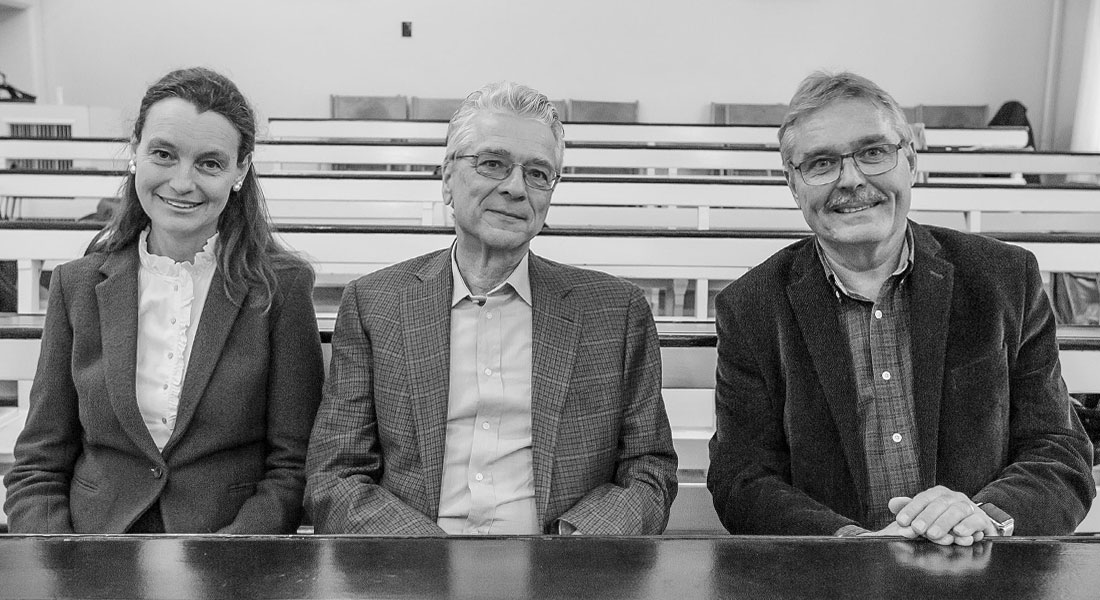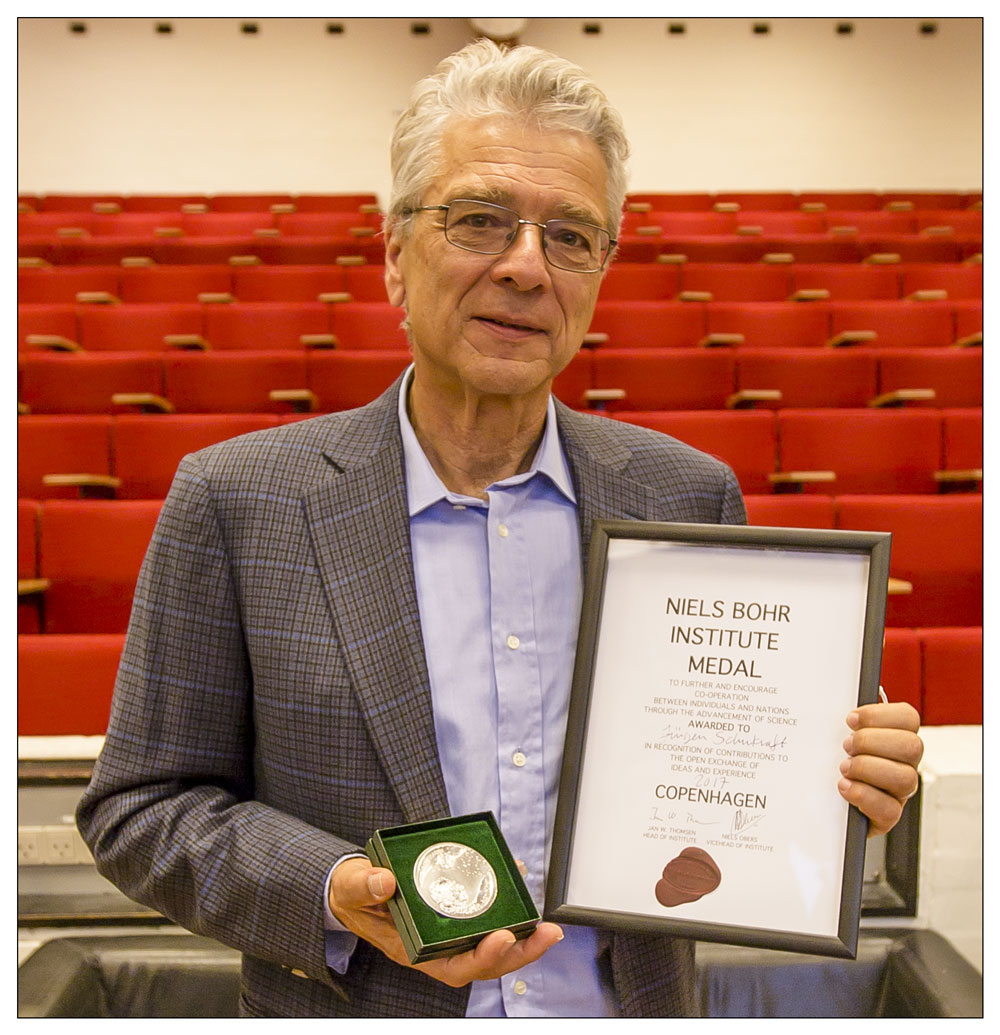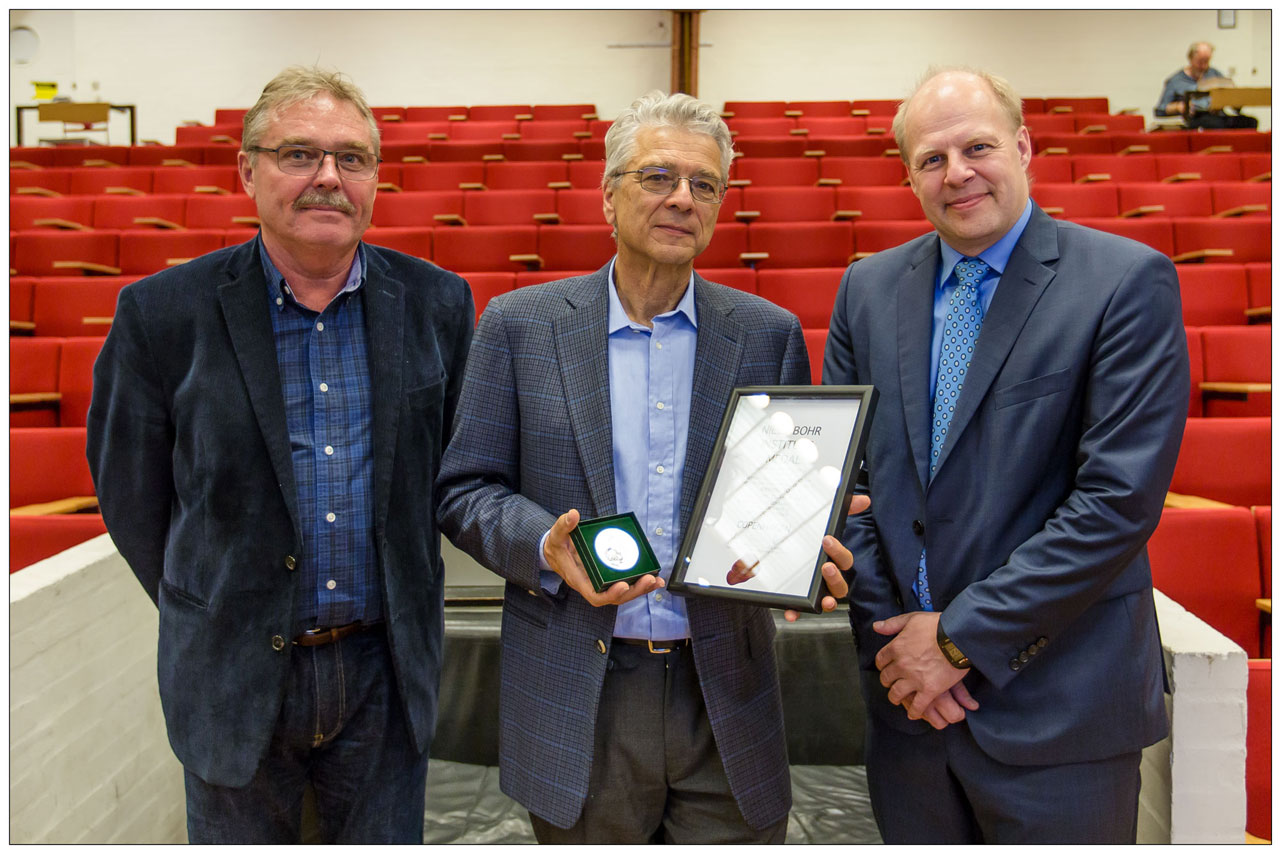Jürgen Schukraft receives the Niels Bohr Institute Medal of Honour, 2017
Jürgen Schukraft, one the world’s leading physicists in the study of the Quark Gluon Plasma(QGP), has been awarded the Niels Bohr Institute Medal of Honour, 2017.

Jürgen Schukraft went to high school in Eppingen, Germany, and later he studied at the University of Heidelberg, from where he received his PHD degree in 1983 on studies done with the R808 experiment at the ISR. The ISR (Intersecting Storage Ring) was then the first hadron collider in the world and it operated at maximum center of mass energy of 62 GeV for proton-proton collisions, about 120 times less than what can be done today.
Schukraft is a member of the DISCOVERY Danish National Research Foundation (DNRF) center of excellence advisory board, and has contributed to the guidance of students and postdocs at the Niels Bohr Institute. He is a regular contributor to meetings and workshops in Copenhagen, most recently, at the QGP-FLOW workshop held at the Institute in this year.
Closely connected to the Niels Bohr Institute
Over the years Schukraft has been closely connected with the Niels Bohr Institute ALICE team, participating in the discussions leading to the definition of the NBI built Forward Multiplicity detector and contributing importantly to the NBI physics program focusing, i.a. , on global event observables and the study of the hydrodynamical flow of the Quark Gluon Plasma, a state of matter consisting of deconfined quarks and gluons that can be recreated in energetic collisions between heavy atomic nuclei, for example, at the Large Hadron Collider at CERN. This is the state of matter that the Universe was in, up to about the first microsecond after the Big Bang.

This led, over the years, to the NA34/HELIOS experiment using proton-nucleus collisions and the NA45/CERES experiment at CERN utilizing beams of heavier nuclei from the newly constructed SPS accelerator. The efforts were targeted at direct photons and lepton pairs which could constitute a direct probe of the conditions prevailing in the initial moments of the collisions and provide a ‘thermometer’ of such collisions in which it was thought a Quark Gluon Plasma might be formed.
The NA45 experiment also revealed a surprising enhancement of the production of such e+ e- pairs over the combined expectations from known resonances- an effect which is still not fully understood, but which bears on the modifications of the medium on resonances and which has prompted extensive theoretical investigation on deconfinement and chiral symmetry restoration.
Planning the construction of LHC and ALICE
Already in the early 1990’ties plans were being made for constructing the Large Hadron Collider (LHC) at CERN, a superconducting machine of 27 km circumference that would outperform any existing machine in the world in terms of energy and luminosity. Immediately the idea also arose to construct the ‘ultimate’ detector for studying the collisions of heavy nuclei with the LHC. The idea of the ALICE detector, a detector that would be able to record and identify tens of thousands of charged particles for every collision, was born.
Jürgen Schukraft was chosen as the first spokesperson (the professional jargon for the leader of the experiment) of the new ALICE collaboration in 1991, and held the post uncontested until 2010, when the experimental program with the LHC was launched.

Throughout, Jürgen has been the driving and inspiring force of the colossal effort involved in defining the multi facetted physics program, developing and building the detector (the size of a cathedral), assembling a large international collaboration of physicists, now numbering over 1000 members and, delivering the first physics.
ALICE is now the largest and most performant detector for the study of relativistic heavy ion collisions in the world and delivering exciting new physics results that increase our understanding of superdense and superhot strongly interacting matter.
There is no doubt that Jürgen’s Schukraft’s seminal contributions to high-energy experimental physics and his long standing role as a ‘friend of the Niels Bohr Institute’ makes him a worthy recipient, the 8th since 2010, of the NBI Medal of Honour.
